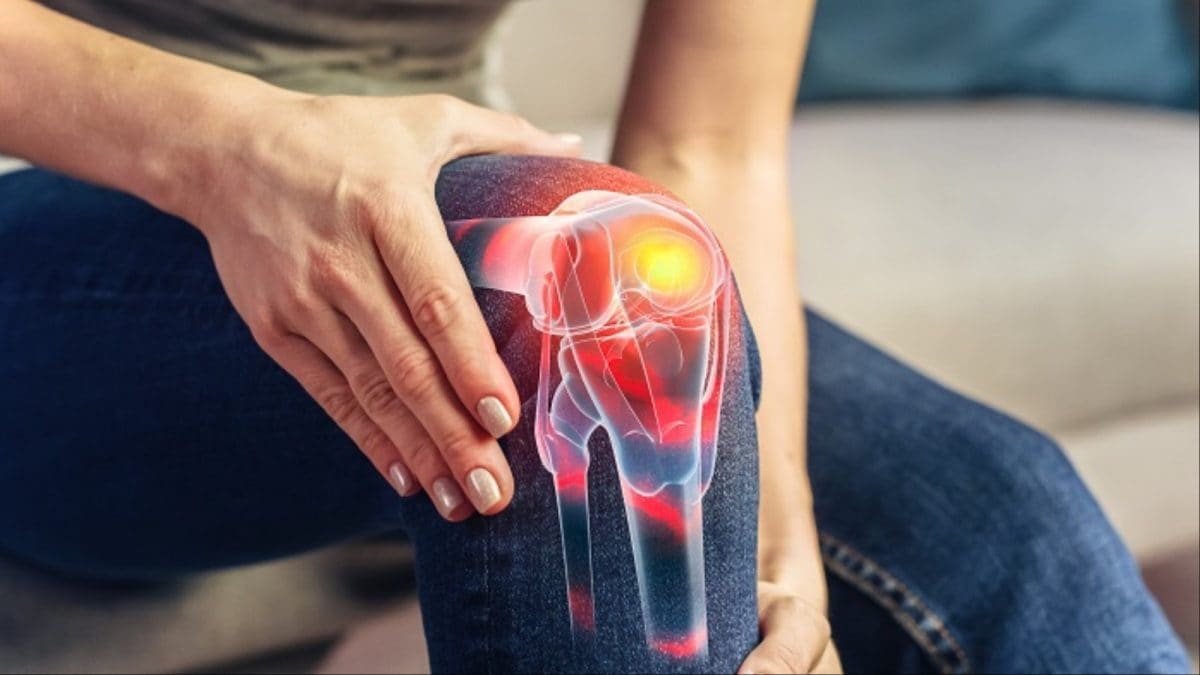Creaks, Clicks, And Cracks: Understanding Why Your Knee Hurts In Your 30s – News18

Last Updated:May 20, 2025, 18:45 IST
From overuse injuries to early arthritis, discover the causes, symptoms, and treatments that can help keep your knees strong, pain-free, and moving well into the future.
Persistent knee pain needs professional evaluation.
Your 30s are supposed to be the prime of your life, full of energy and agility. However, due to poor lifestyle choices, simple activities like a casual jog or a trendy pickleball match leave your joints aching and creaking. According to a study, the number of people affected by Osteoarthritis (OA) in India has skyrocketed from approximately 23.46 million in 1990 to 62.35 million in 2019, with Knee OA being the most prevalent form. Another study in Tamil Nadu found that about 29% of people aged 20-40 years old visiting orthopaedic clinics were already suffering from knee pain.
Why Do Your Knees Hurt?
For younger adults, knee pain is usually due to overuse, trauma, repetitive injury or underlying developmental disorders of the musculoskeletal system. Dr. Prashanth Nagraj, Consultant Orthopaedics, Even Hospital, Bengaluru, explains what happens when your joints decide to raise a red flag.
Runner’s Knee (Patellofemoral Pain Syndrome): Runner’s knee happens when the kneecap does not move smoothly like it should due to misalignment (of soft tissue/bony structures). Instead of gliding in its track, it rubs the wrong way, causing a dull ache around the front of the knee.
Meniscus Tears: One wrong twist, whether on the field or just walking, can tear the cartilage cushion inside your knee. Swelling, stiffness, and a locking sensation when you straighten your leg? Classic signs.
ACL or MCL Tears: Sudden stops, jumps, or quick direction changes (looking at you, basketball players) can wreck these ligaments. A loud pop, swelling, and a knee that feels like it might give out? Not ideal.
Iliotibial (IT) Band Syndrome: Runners and cyclists know this one – sharp, burning pain on the outer knee from the Iliotibial (IT) Band tightening and rubbing against the joint.
Jumper’s Knee (Patellar Tendinitis): Too much jumping leads to pain right below the kneecap. Skip treatment, and it’ll only get worse.
Early Osteoarthritis: Rare in younger adults, but injuries or extra weight can trigger it. Stiffness, deep aching, and morning swelling are red flags.
How to Keep Your Knees Happy?
Dr Nagraj lists how to maintain your knee health.
Strength training: Focus on hips, thighs, and core – these are your knees’ built-in shock absorbers. Weak muscles here mean your joints take the hit instead. Picture it like building a support system for your body’s most hardworking hinge.
Warm-ups & Cooldowns: Those 5-10 minutes of dynamic stretches before activity and static stretches afterwards aren’t just formalities – this routine keeps you flexible and reduces injury risk.
Good shoes: Supportive, well-cushioned shoes that match your activity level and foot type are essential. Replace athletic shoes every 300-500 miles to ensure adequate shock absorption.
Slow and steady: Follow the 10% rule when increasing workout intensity or duration. Sudden spikes in activity place excessive stress on joints that haven’t had time to adapt.
When To Stop Looking On The Internet And Actually See A Doctor?
Knee pain in your 30s often gets dismissed as normal wear and tear, but here’s how to tell when it’s more: persistent pain lasting more than two weeks, swelling, instability, or that scary moment when you can’t bear weight, plus those locking/clicking sensations.
Dr Nagraj says, “During evaluation, orthopaedic specialists don’t guess – they follow a methodical approach. The clinical examination checks range of motion, spots swelling and tenderness, and uses special tests to find the issue. When needed, imaging tests tell the full story—X-rays show bone problems, while MRIs see soft tissue injuries, particularly ligament/meniscus tears. Recognising these signs early is like having an insurance policy against long-term limitations.”
When To Consider Surgery For Knee Pain?
For most knee issues, surgery comes last. Dr Nagraj adds, “The first line of treatment is always non-surgical solutions that tackle pain and promote healing. Fresh injuries typically respond well to the RICE method (Rest, Ice, Compression, Elevation), while ongoing discomfort often backs down with physical therapy. Many patients benefit from additional support through braces, taping, or massage, all of which help stabilise the knee during recovery. When inflammation won’t quit, medications like NSAIDs step in, while more stubborn cases may need injections like PRP or corticosteroids to cool things down.”
When these approaches prove insufficient after careful evaluation, surgical options come into consideration. “Arthroscopy lets surgeons fix damaged ligaments or cartilage through tiny incisions with camera help. For chronic kneecap instability, realignment surgery sets things straight. In cases of significant cartilage damage, specialised repair techniques work like artisans restoring the joint’s smooth surface. The golden rule? Match the treatment to the need- always starting with the least invasive approach that works,” concludes Dr Nagraj.
Dealing with knee pain in your 20s or 30s can be frustrating, but the good news is it’s typically manageable and often avoidable. By staying alert to early warning signs, maintaining healthy movement habits, and seeking professional guidance when necessary, you can stay active and keep discomfort at bay well into the future.
- Location :
Delhi, India, India
- First Published:
[title_words_as_hashtags




